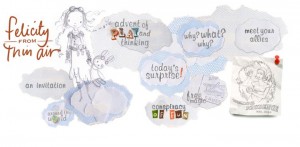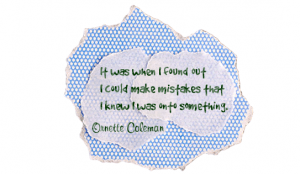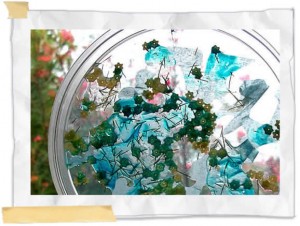Two weeks ago, I attended the Digital Badge Summit in Denver, CO.
I’ve been somewhat hesitant to jump into digital badges world (despite knowing the digital badge ninja, @senorg) because I feared that digital badges were just one more way to categorize and label kids, another carrot to dangle in the classroom. I must admit, that some of this hesitation comes from experience with digital badges within EPIC Kids books, an app we love at Anastasis.
Our students (and teachers) have long been fans of EPIC! because it brings us so many books and expands our classroom libraries and feeds our students desire to read. Toward the end of the school year, EPIC added digital badges. Each time a student reads a book, they earn a badge within EPIC. Pretty quickly our students stopped actually reading the books they had so loved just weeks before. They discovered that if they stayed on each page for a few seconds before flipping, they could get through books really quickly (without actually reading them) and still earn a badge. As educators, we watched our student’s love for reading dissipate in favor of a digital badge. We watched kids go from discussing the books they read, to competing to see who had the most badges. You can read about the full break down on @michellek107‘s blog here.
You can see why it was with some trepidation that I embarked on the Digital Badge Summit, but knowing @senorg as I do, I knew there would be more to digital badging. The Summit was led by Aurora Public Schools who has been on the front end of the digital badge movement. I’m so impressed with the way they have thought about, and are rolling out badging. It is not a replacement for assessment. The badges are not content specific, or task specific. Instead, the APS badges are being used to credential preschool-12th grade students in 21st Century Skills. APS has also partnered with more than 20 Endorsers who are facilitating a currency wherein students who earn endorsed badges, can use them in order to unlock opportunities with employers. Students can earn badges in any order and through a variety of disciplines, making them very customizable to each student’s individual needs, strengths, and experience.

APS issues badges using Credly. Credly is an end-to-end credential and badge management system. It seamlessly integrates into social media and Open Badge compliance and has an Open Credit API. Badges are fully customizable, it is easy to issue badges to recipients, includes identity verification (to ensure credibility and authenticity), and allows students to share achievements on a variety of sites.
Perhaps my favorite moment of Digital Badge Summit was the bold declaration that digital badges could be a great equalizer in education. @npinkard talked about learning deserts and how digital badging can help us better leverage a youth ecosystem to meet students where they are at (school, community, home, after school, etc.) Students move across multiple learning spaces constantly. These are spaces defined by where learning happens, not a school address. People put their time into learning things that have social capital. Digital badges can be a tool for social and economic justice. They can be a door opener to a successful future.
An APS student spoke toward this reality as he described his own education. As a student with learning needs, he often received a report card that revealed all of the places that he was failing within his education. It revealed every struggle and none of his brilliance. When APS began issuing badges, this student, for the first time, was able to capture and share his brilliance. While he may not be good at the school game, it did not mean that he didn’t have strengths, places where he truly shined. The badges gave this student a way to capture and celebrate what he was good at and share that with others. Now, he is able to take his accomplishments and share with future universities or employers all of the things that make him a standout candidate even if his grades don’t necessarily reflect that. Digital badging can give students a language to promote their skills and experience to future employees or schooling. Digital badges can also be used to facilitate meaningful relationships between students and mentors, they can be used to help guide and motivate students.
A distinction was made between standards (expecting a high-quality) and standardization (repetition, everyone being a cog in the system). As @dajbelshaw said, “I don’t go to two separate Michelin Star restaurants expecting the same dish, but I do expect the same high quality.” This is an important distinction, and one I don’t think we make enough in education. It is also the difference between prescriptive pathways and descriptive pathways. Badges shouldn’t be prescriptive, they should be descriptive of what a student has done. A learning autobiography of what has been accomplished rather than the charted path. “Keep badges weird. Don’t replicate the system we have now with ever more high stake credentials.”-@dajbelshaw
We also heard about how badges can make an e-portfolio more interactive, when badges can be linked directly to learning evidence, students have a powerful map of their learning that is searchable and shareable. Anastasis uses e-portfolios together with our assessment system to help students remember and reflect on their learning journey. The badges can act as a bread-crumb-trail of sorts so that students can go back through and reflect on where they started and all the steps along the way that led to accomplishments. Like growing older, learning often happens as such a pace, that you don’t always know it happened until you look back at pictures. It is only through reflection that you realized that you’ve changed at all. Students need a way to celebrate their small and big wins alike. Badges can help students see the richness of skills that have been learned that isn’t easily captured otherwise.
Several Colorado organizations shared about the ways that they are using digital badging to help students capture learning including the Denver Public Library, Colorado History Museum, and Colorado volunteers. The programs are impressive to be sure, but one of the things that became apparent is that there needs to be a common language in the Digital Badge space. Currently those who are issuing badges are often doing so within their own ecosystem. There isn’t a common ‘currency’ where badges are created and shared. In order for them to reach their full potential, badges need to be more universally shared and accepted so that they exist in a common space. The struggle here is in, “who defines knowledge and gives it a value?”- Paulo Frier This is an important consideration! Badges shouldn’t be controlled by one organization, but rather open, transferable, stackable, and evidence based. Every learner should be able to control their identity and therefore their badges.
“Badging can help credential all things that make us fully human.” @dajbelshaw
Reports and certificates show a very narrow view of what it means to be human. Digital badges open up a wider ability to help us describe who we are and what makes each of us unique. That badges can help us speak toward what makes us more fully human is the reason I left the Digital Badge Summit hopeful. Hopeful that rather than diluting learning with another “carrot” dangled, that digital badges can be a way for students to share their uniqueness, what makes their identity different from anyone else. Used properly, badges can be used to reveal and celebrate our individual humanity. Thanks @senorg and APS for putting on a truly spectacular summit!








